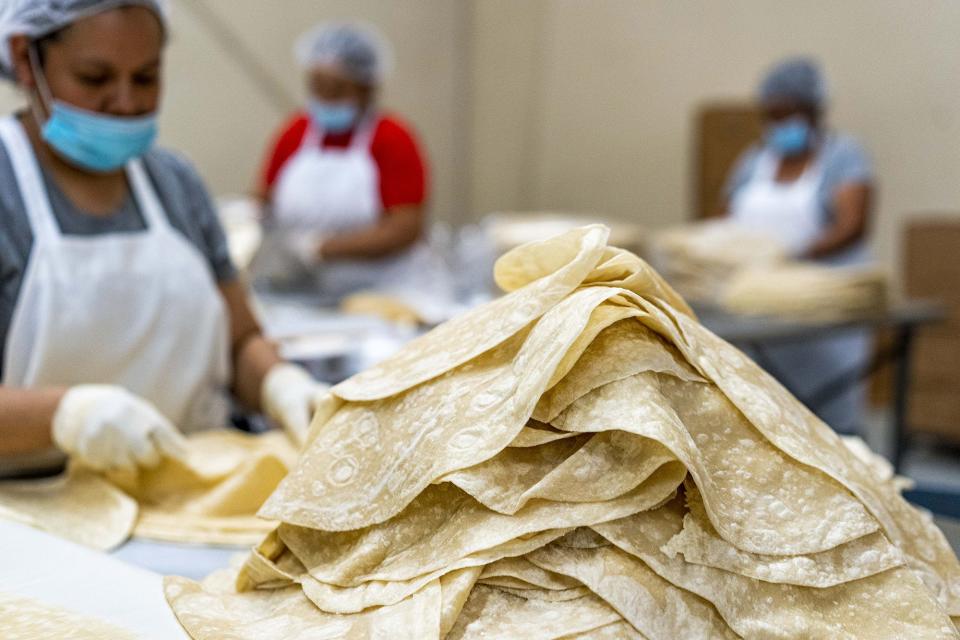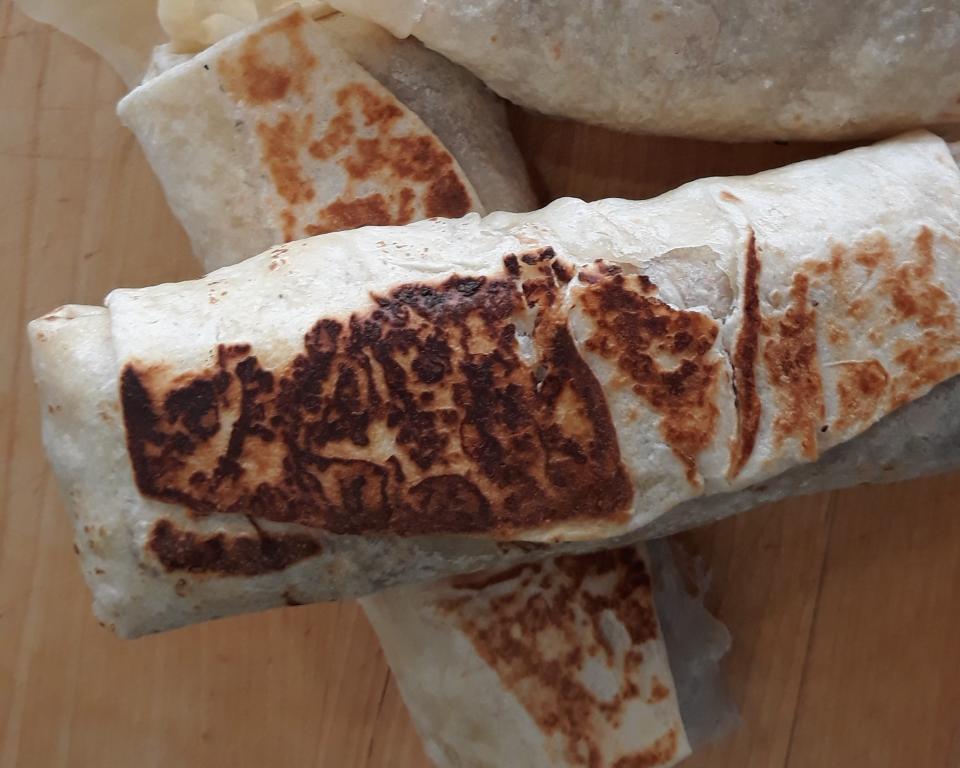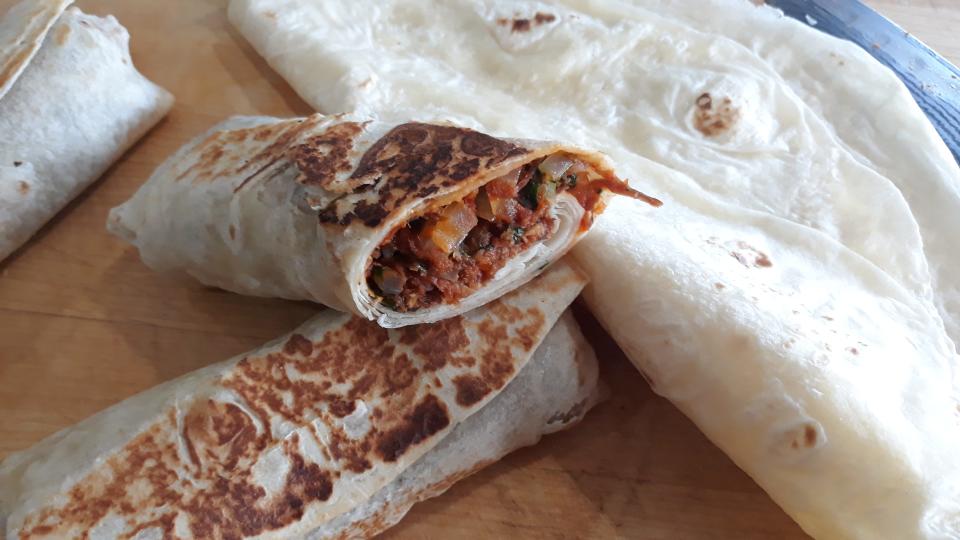Burrito myths, legends and how to make classic Sonoran burros de machaca
The burrito—whether a simple bean and cheese or a monster Mission-style affair—has long been involved in cross border games of telephone, the message passed from one side to the other, scrambled, enhanced, autotuned, scrambled again and returned in the form of a deliciously portable food.
One legend has it that the burro is thousands of years old and was the preferred food of Mesoamerians. Another claims it was born in Ciudad Juárez, made for the first time by a Chihuahuan street vender. Others insist it sprung from the vast desert and mountainous wilds of Sonora. Some myths are easier to dispel than others, but no matter the true origin story, the fact remains that burritos have become an essential part of our culinary heritage.
A burrito requires a flour tortilla

The ancient origin story is the most unlikely. Mesoamericans used corn tortillas, which simply don't have the required origami-like flexibility or holding power required to make a burrito. Without a doubt, food was encased in corn dough and in corn tortillas in pre-conquest Mesoamerica, but to call these burritos is a stretch.
The flour tortilla is not a Sonoran or Mexican invention, but traces its roots to Arabic cuisine, which had a strong influence on Spanish gastronomy, especially around the time of the American conquest, due to the centuries long Moorish occupation of the Iberian peninsula. This Mozárabe —Spanish Arab— influence travelled with missionaries who brought the concept of pliable wheat flat bread to the Sonoran region in the 1650s.
Jesuit missionary, Father Eusebio Kino, is credited with spreading the adoption of European agriculture throughout the Sonoran Desert region, starting from the 1680s until his death in 1711. Wheat, fruit trees, cattle and goats were all introduced with the mission system, and spread throughout the region, from San Xavier del Bac, near modern day Phoenix, to Tmacacori south of Tucson.
The mild and arid Sonoran winters were particularly well suited for wheat, with an extended growing season that continued even when it was too cold for corn. This new crop became a staple grain in the Sonoran diet and enabled the popularization of a flour-based tortilla.
Jesuit Missions were not only agricultural centers, but record keeping centers as well. In Tumacacori’s records, it is noted in an entry from January 2nd, 1760, that ‘tortilla maker and cook María Guadalupe died at Guevavi, leaving behind her husband, Marcos, who was also a cook for the mission.’ To note the death of a humble tortilla maker in mission records demonstrates the importance of this daily bread in the life of the mission.
This timeline makes the next legend a bit more believable. As the story goes, Juan Méndez, aided by his donkey (or burro), pulled a cart through the streets of the northern city of Ciudad Juárez during the 1910s, around the time of the Mexican Revolution. He needed portable food to sell to soldiers and those trying to escape the crossfire as battles raged between the various factions vying for power, along with plenty of American military interference. The need for a portable, hearty meal to fuel these activities is quite plausible, but the invention of the burrito is much like the invention of fire in that it most likely sparked in multiple places at once and then spread.
Sonoran burritos offer a taste of the past
Whether the first tortilla wrapped meal was in Chihuahua or Sonora, will probably never be known, but there are some particularly compelling cases for why the original to-go meal would have been developed in the Sonoran land of wide open, fertile ranges where the cattle introduced by Jesuit missionaries grazed.
Keeping cattle in a land of mountain lions, raids and general wildness requires keeping a keen eye on them, whether from the back of a horse, donkey or mule. It also requires traveling long distances. A meal that could be prepared ahead, travelled well, could be eaten one handed while on the move and that fit nicely in the pocket of a saddlebag, would be a necessity for early vaqueros or Sonoran cowboys.
The Sonoran style burritos served today are more like the simple, original burros. Those early versions were filled with leftover beans, cooked meats or machaca, a dried pounded beef that's a staple of northern cattle ranching lands. Nothing fancy, but portable and nourishing.

If your concept of burritos comes from Mission style, then you might have been surprised when you first ordered a burrito in Arizona. Mission burritos are gargantuan creations stuffed with rice, beans, lettuce, salsa, guacamole, cheese and meat that are then tightly wrapped in aluminum foil. Considered an American creation, they were born in San Francisco’s Mission district and popularized nationwide by chains like Chipotle. They've even made their way back down into northern Mexico, where they morphed again in Hermosillo to become burros percherones (percherones are the giant breed of horse known in the States as a clydesdale).
How to cook Sonoran-style Mexican food: Make classic chile Colorado
The classic burrito has endless variations and rather simple parameters: a good tortilla and a fairly dry filling so as to not create a soggy mess. Beyond that, machaca can be substituted with chorizo, some cooked potatoes can be added along with chile colorado. The filling can be cooked with an egg to bind everything together. It's a vehicle for leftovers and a hearty meal meant to get you through a long day.
This practical tradition continues in modern Sonora, where I still remember my maternal great grandmother leaving her house for doctor appointments and errands, her purse packed with small bean and cheese burritos that assured she wouldn't be caught hungry.
Recipe: Burros de Machaca

Machaca is a pounded dried seasoned beef that can easily be found in local Mexican grocery stores. American convenience stores offer the unpounded version, commonly known as beef jerky, so if you need a substitution, grab the jerky (though perhaps not teriyaki flavor), a meat tenderizer or hammer and a sturdy cutting board and get pounding.
Servings: 4 small burritos
Ingredients
Oil or lard, as needed
1 small white onion, diced in ¼-inch pieces
2 Roma tomatoes, diced in ¼-inch pieces
2 large cloves garlic, minced
4 ounces carne machaca, shredded dry beef
½ cup chile colorado, or to taste
Chopped cilantro, to taste
Salt, as needed
4 10-inch flour tortillas
Preparation:
Heat a skillet over medium, adding enough oil or lard to cover the bottom of the pan when hot. When the oil begins to shimmer, carefully add diced onion, stirring to coat. Cook until softened, approximately 5 minutes, and season lightly with salt.
Add diced tomatoes and stir to combine. Lightly season with salt again. Once tomatoes have softened, approximately 3 minutes, add minced garlic and cook until fragrant. Add machaca, stirring well to combine with onions and tomatoes.
Continue to cook over low heat for two or three minutes, while continuing to stir, allowing the machaca to absorb any liquids released by the vegetables. After a few minutes, add chile colorado to the pan. Stir and once fully absorbed into machaca, remove from heat.
Heat a dry skillet over medium. Briefly warm a tortilla on both sides, just long enough to heat through, but not toast.
Remove from heat and add ¼ of the filling in a narrow rectangle down the center of the tortilla. Fold the bottom and top of the tortilla over the filling, fold in each side of the tortilla, encasing the filling, and roll the burrito closed.
Once all burritos have been filled and rolled, return to dry skillet, seam side down, to seal and toast to a golden brown color.
Questions or comments? Email the culinary team at cooking@azcentral.com. Follow chef Minerva Orduño Rincón on Instagram @cucumbersandlimes.
This article originally appeared on Arizona Republic: History of burritos and how to make classic, Sonoran burros de machaca

